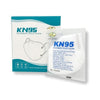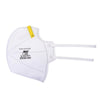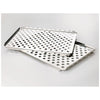- No products in the cart.
Ultimate Guide to Microscopes: Microscopes 101
Microscopes are one of the most critical inventions in scientific history, they are essential pieces of lab equipment that help make important scientific discoveries by enlarging tiny structures.
There are five main types of microscopes still in use today, and they all have their own unique qualities.
This comprehensive guide will help you purchase the right microscope for your needs and avoid costly mistakes. Let’s Begin!
Glossary
- 1. Different types of microscopes
- 2. Do I need a Compound or Stereo Microscope?
- 3. What optics and lenses should I consider?
- 4. What type of illumination is best for my needs?
- 5. What type of focus systems are important?
- 6. Which components do I need, and which can I do without?
- 7. What are ABBE, Iris, and DIN, and why are they important?
- 8. Compound Microscopes
- 9. Stereo Microscopes
- 10. Microphotography: Cameras & Videos
- 11. Microscope component breakdown
- 12. Why Buy From Lab Pro?
1. Different Types of Microscopes


-
Simple Microscopes
In a simple microscope, convex lenses of short focal length are used to see a small object’s magnified image. A simple microscope’s magnifying power is the ratio of the angle subtended by the image at the eye to the angle subtended by the object seen directly when both lie at the least distance of distinct vision or the near point.


-
Compound Microscopes
Compound microscopes consist of two convex lenses. A lens of short aperture and short focal length facing the object is called objective. Another set of lenses of relatively moderate focal length and large aperture facing the eye is called the eyepiece. The object is placed between the center of curvature and the focus of the objective. The image acts as an object for the eyepiece, which then acts as a simple microscope to produce the magnified image.


-
Electron Microscopes
Electronic microscopes are a bit different than the other types of microscope supplies. These complex instruments contain a source supplying a beam of electrons of uniform velocity, a condenser lens for concentrating the electron on the specimen, an objective lens, a projector lens, and a fluorescent screen. That screen is placed on a photographic film for a permanent record of the magnified image. Electron microscopes have much, much greater ranges of magnification capabilities compared to other types.


-
Phase-Contrast Microscopes
These types of microscope supplies are used to study the behavior of living cells. It is a contrast-enhancing optical technique that can be used to produce high-contrast images of transparent specimens. Living cells can be examined in their natural state without being killed, fixed, or stained using phase-contrast microscopes.


-
Interference Microscopes
Interference microscopes are used for quantitative studies of macromolecules of the cell’s components. A pattern of bright and dark lines result from an optical path difference between a reference and a sample beam. The incoming light is split inside an interferometer; after reflection, the beams recombine, undergoing constructive and destructive interference and producing the light and dark fringe pattern.
2. Do I Need a Compound or Stereo Microscope?

The microscope that you buy primarily depends on the type of samples or objects you plan to view from it. Consider what you need to view from it and what you intend to do with the image before buying the microscope. Let’s start!
A compound microscope is a high power device, whereas a stereo microscope is a low power device. For high magnification viewing, choose a compound microscope. It features high magnification settings and high optical resolution for viewing small details in an image via the objective lenses.
For low magnification viewing, choose a stereo microscope. Stereo microscopes feature larger focusing distances, enabling you to fit your hands and tools between the lens and image. It also provides you with a larger viewing field to allow you to see a more extensive section of the image under the lens.
A quick way to determine the type of microscope you need is to think about the type of sample you want to view with it.
For compound microscopes, light needs to pass through the sample to create an image, as the light emits from the bottom of the device up through the sample, known as transmitted illumination. For stereo microscopes, light does not pass through the sample. The device has upper light sources, known as reflected illumination, which shines down and reflects off those samples to create an image.
Once you have decided on the type of microscope you want to buy, next, you need to consider the following list when you buy one: optics or lenses, lighting, and focus.
3. What Optics and Lenses Should I Consider?

You need to consider the optics or lenses of several microscopes before you buy one. When looking at microscopes, look for Deutsche Industrie Norm or DIN, which is an international standard for optics. On some microscopes, you will see JIS, which is a Japanese standard.
Choose DIN, as you can easily replace a damaged or misplaced objective lens because they are easily available. Next, ensure you buy a microscope with an achromatic or colored corrected objective lens. If the lens is not color corrected, you will not be able to see the sample in its entirety.
Next, look at the eyepieces.
The eyepiece or ocular is the lens that is closest to the eye. Get a microscope with a wide field eyepiece, as the opening of the lens is significantly larger. A wide-field eyepiece is around 18mm and makes viewing from it comfortable and easier.
Additionally, it will widen your view field, and when viewing the sample, you will not need to move the slide as much. Do not buy a microscope with a changeable eyepiece, as dust can get into the hard to clean areas of the device. To prevent dust, cover it with a cloth.
The objective lens is responsible for the resolution, meaning the amount of detail that it will capture and show you through the eyepieces. For instance, a 40x objective lens and 10x eyepiece will provide you with a higher resolution than a 20x objective lens and 20x eyepiece. If you want a sharper image, go with a 40x objective lens.
Lastly, you need to select between a monocular and binocular microscope. If you are using the microscope every day for several hours, opt for a binocular microscope. Binocular microscopes also provide you with a more comfortable viewing experience than a monocular microscope.
4. What Type of Illumination Is Best for My Needs?
The three lighting systems include:

Tungsten or Incandescent Light is the least expensive bulb and offers a steady source of light. The disadvantages of this lighting system are that it emits a yellowish light, which can influence the color accuracy of the sample. It also generates a lot of heat, which can dry out the specimen and kill live specimens. Another downside of this bulb is that since there is no standard bulb, replacing them is difficult.

Fluorescent is a gas-filled tube that turns on when electrified. They are expensive to replace but cheap to operate. The advantage of using a fluorescent equipped microscope is that the light appears white and allows you to look at the sample as they would look in nature. They also produce less heat..

LED or Light Emitting Diode provides you with several advantages. They consume less power, have a long lifespan, and you can equip them with a rechargeable battery system, which makes them portable. If you want a microscope with LED lights, buy one that is dimmable, as they emit bright light, which you can only turn on and off.
5. What Type of Focus Systems are Important?

-
Coarse Focus Systems move the sample quickly through the focal plane. With it, you might find it difficult to focus on a sharply focused sample. Due to the large vertical movements of the stage, which can because with only a partial turn of the Coarse Focus knob, it is recommended that coarse adjustment is never used with higher power lenses, such as those exceeding 40X.
-
Fine Focus Systems allow you to view the various levels of the image using a light touch. The knob, which is located inside the Coarse one, is designed to create smaller stage movements that should be used with high power objectives when focusing on specimens.
6. Which Components Do I Need, and Which Can I Do Without?
When purchasing a microscope, the best thing to do is talk to a LabPro expert (email us at info@labproinc.com or call us toll-free at 888-452-2776) so we can listen to your exact needs and make a recommendation.
The main components you’ll want to look for are magnification, comfort, price, and application. Some of the other primary components include eyepieces, lens tubes, stages, tables, condenser, objective revolvers, fine and coarse focus abilities, and light sources.
7. What Are ABBE, Iris, and DIN, and Why Are They Important?

The ABBE value is an essential property of lens material that indicates the measure to which degree light will be separated when passing through it. Specifically, it refers to the amount of chromatic aberration, an effect where the colors are incorrectly reflected. While lower Abbe values are more common in plastic lenses, a higher value translates to better optics.
The internationally adopted Deutsche Industrial Normen optical standard, more commonly abbreviated as DIN, can be found in most quality microscopes. The length of its objective is 160mm.
The Iris diaphragm, found below the stage, is used to control the amount of light reaching a specimen. It changes the N.A (Numerical Aperture), which, in turn, affects the contrast, illumination, and focus of a specimen’s image. It is adjusted via a lever. Increasing the amount of light by widening the aperture of the microscope’s iris diaphragm will increase the illumination of the specimen, giving you a brighter image. Since light is not concentrated, however, this will lower the image’s contrast.
8. Compound Microscopes
A compound microscope is named as such due to its use of a dual-lens system. An ocular lens is utilized along with an objective lens that features a short focal length to easily view images of smaller specimens, such as bacteria, animal cells, and protozoa. A compound system may have 1 of 2 different light sources; one uses a mirror to reflect light, while it could also have a built-in source.

9. Stereo Microscopes

A stereo microscope differs from a compound by its use of two optical paths, with one for each eye, that allow for a 3-d image due to different anglings for the eyes. It also uses light reflected from the specimen rather than transmitting it through them like compounds, making them ideal for denser objects. Stereo microscopes do have a lower resolution but compensate for it with their larger working space, allowing users to handle the specimen under the microscope (e.g., dissections).
10. Microphotography: Cameras & Videos
Microphotography is used to capture miniature images on a very small film that can only be viewed on a microscope. The process itself entails reducing the image size for the purpose mentioned above. These photographs can be taken by either Linear or 2-dimensional arrays.
11. Microscope Component Breakdown

- Eyepiece: The initial, topmost piece of a microscope used to help magnify the image.
- Body Tube: Supports the nose and eyepieces and can be moved to provide a clearer image.
- Revolving Nosepiece: Can be rotated with ease to change power. The turret holds the objective lenses, typically consisting of 4X, 10X, 40X, and 100X powers.
- Objective Lens: 3 replaceable lenses that magnify the specimen on the slide.
- Coarse Adjustment: The knob on the microscope’s arm that moves the stage either up or down, bringing the specimen into focus.
- Fine Adjustment: This knob is located inside the coarse adjustment knob and is utilized to bring the specimen into sharp focus under low power. Fine adjustment is always used when using high power lenses.
- Light Source: This is a switch used to turn the light source on and off.
- Arm/Handle: A secure arm attached to the body tube, used to carry the microscope.
- Rack Stop: A pin that fixes the column tube at a certain height.
- Fixed Stage: Used for holding specimens and slides for examination. Located above the illuminator and below the objective lens.
- Mechanical Stage: Mechanism used to move the microscope slide. Allows the user to move the slide in an X or Y direction slowly and smoothly.
- Clips: Holds the slide in place, maintaining clear and consistent viewing.
- Side-Ward Movement Knob: Knob located on the microscope’s side to move the slide left to right.
- Front and Back Movement Knob: Knob located on the microscope’s side to move the slide forward or backward.
- Condenser and Diaphragm: The condenser takes the parallel beams of light from the Iris and shapes them into a cone.
- Mirror (Convex and Concave Mirror): Convex focuses using refraction while concave focuses using reflection. Convex is thicker in the center than by the edges.
- Base: The bottom of the microscope used for support.
- Pillars: The strong vertical tube connecting the bottom support base to the microscope.
12. Why Buy From Lab Pro?
For over 40 years, Lab Pro has been committed to providing both professional and amateur users with the most innovative and premium quality microscopes, cameras, and microscope accessories at the lowest possible prices. A Lab Pro expert will be happy to help you design a microscope that's customized to your needs. You will always reach a live customer service representative when you call us during our business hours.
Lab Pro is happy to offer:
- High-Quality Microscopes, cameras, and microscope accessories, representing world-class brands such as: Scienscope, Meiji, Basler, Excelitas
- Personalized customer service and care
- Expert knowledge to help you choose the right microscope for your application
- Technical support and troubleshooting
Do you have questions or need assistance? If so, just email us at info@labproinc.com, or you can reach us toll-free at 888-4-LABPRO (888-452-2776).








































